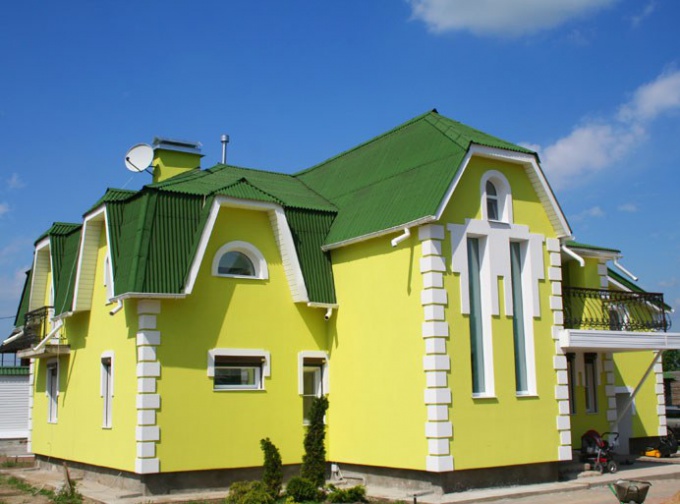You will need
- - watering can or spray gun;
- - big brush;
- - metal brush;
- cement, sand, water;
- - bucket (1 l);
- - building level;
- - float, float;
- rules and beacons (with aluminum strips).
Instruction
1
To obtain satisfactory result, start treatment of the facade with preparatory work. New brick house moisten with a spray bottle or watering can. It can be plaster without primer. But if you have an older brick house with barren walls, before plastering contractors sweep up the dust. For that we'll need a big brush with stiff bristles. After wetting the walls down to the primer.
2
Plaster exterior walls may be carried out using special nets. This will secure it to the wall and apply the plaster mix on top of the grid.
And you can set marks – small areas of the proposed solution the thickness of the layer of plaster, which, strictly on the level, mounted beacon (aluminum slats). The interval between beacons 1 m, angle back, please, 20-30 cm For the reliability of the beacons secure the bottom with dowels. After the installation of the beacons allow the solution 4-5 hours for curing.
And you can set marks – small areas of the proposed solution the thickness of the layer of plaster, which, strictly on the level, mounted beacon (aluminum slats). The interval between beacons 1 m, angle back, please, 20-30 cm For the reliability of the beacons secure the bottom with dowels. After the installation of the beacons allow the solution 4-5 hours for curing.
3
For spraying plasters use a rule (aluminum rail), the bucket or the Falcon (a special plate). And spread the solution with a trowel, moving it from the bottom up. Leveled mortar for plaster, using beacons moving slowly upward. Surface further align the rule.
4
Plastering complete solution consisting of 1 part of cement, water and 3 parts sifted sand. Apply a thin coat of soil in several stages, thereby decreasing the occurrence of shrinkage cracks. A thickness of about 5 mm, apply a first liquid layer (scratch coat) so that it penetrated all the pores. This will ensure strong adhesion of the primer to the wall surface.
5
Wait until dries and hardens one layer, and only after this apply another layer (the ground). To do this, take a thick solution. From this basic layer depends on the thickness of the plaster (3-10 mm).
6
To better keep the upper layer on the dried out layers of plaster go with a wire brush. This will increase the roughness and thus the reliability of coupling of a plaster layer. The upper end of a levelling layer (nakryvka) has a thickness of 2 mm.
7
Plaster the exterior walls came to its final stage – grouting. Tightly press the trowel to the wall, making it (counterclockwise) circular motion.
Stucco exterior walls completed. Then proceed to whitewash the walls.
Stucco exterior walls completed. Then proceed to whitewash the walls.
Note
Treatment of the facade in any case should not be carried out without prior surface preparation, as in this case, the plaster mix ill stick to the wall. Forming a "quilted", plaster falling off in large chunks.
Too thin a layer of plaster does not hide wall irregularities, and a very thick layer when hardened can crack.
Too thin a layer of plaster does not hide wall irregularities, and a very thick layer when hardened can crack.
Useful advice
If you need plastering work quickly, add a solution of water or a solution of a 10% bone glue. In this case, the solidification process is slowed down.
